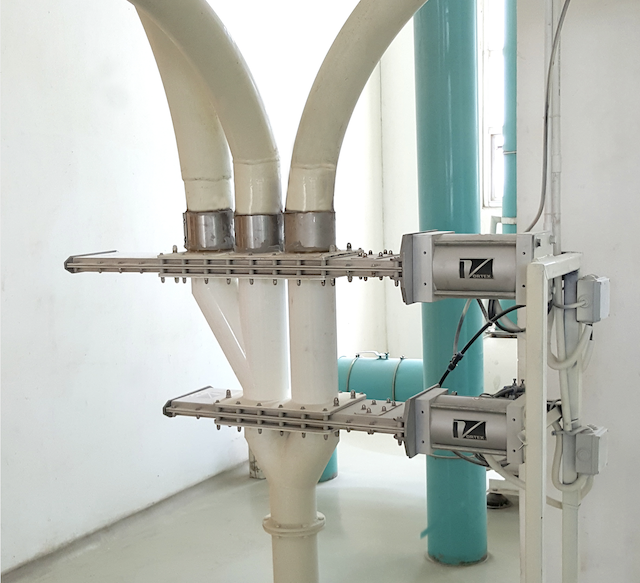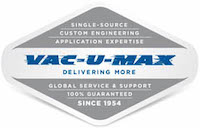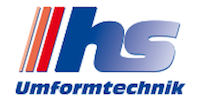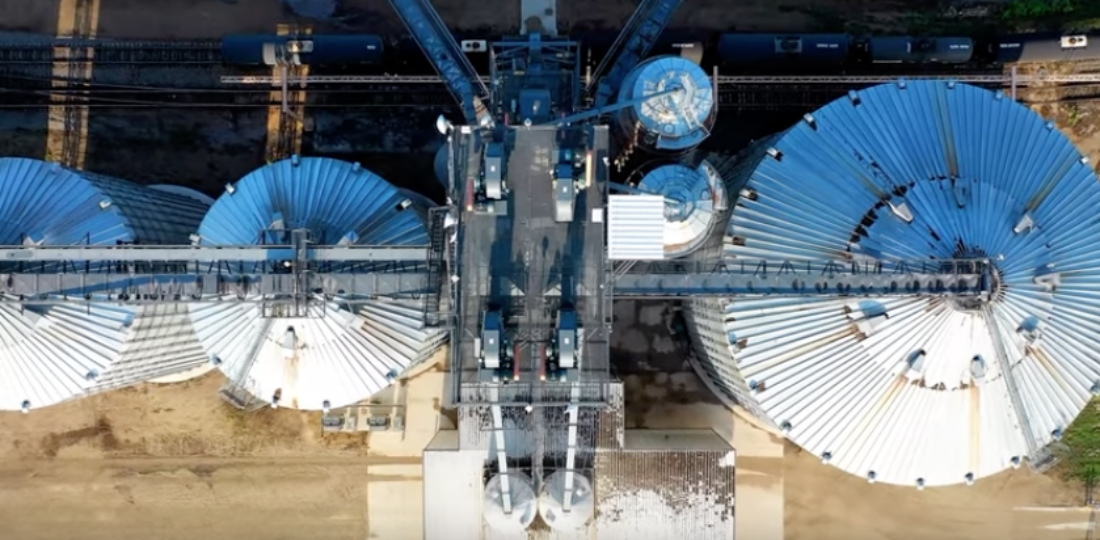Vortex Videos

 Vortex – Solids & Bulk Handling Components
Vortex – Solids & Bulk Handling Components
**********
Vortex Videos
shown on the Powder Bulk Videos Portal:
2. Vortex® Seal Tite Diverter™
3. Vortex™® Wye Line Diverter™
4. Vortex® Orifice Slide Gate Valve™
5. Vortex® Telescopic Loading Spout
6. Vortex® Aerated Conveying System
7. Vortex® Roller Slide Gate Valve™
8. Vortex® Fill Pass Diverter™
9. Vortex® Flex Tube Diverter™
10. Vortex® Pivoting Chute Diverter™
**********
Visit Homepage
**********
Bulk materials handling technologies are essential for efficient and cost-effective handling of bulk solids in a variety of industries. Polimak designs and manufactures mobile bulk materials handling systems for numerous demanding applications. Our smart logistics solutions – expertly engineered for bulk solids loading, unloading, discharging, and storing, improve the operational efficiency of material handling processes....
RETTAR is a global leader in providing radar-based solutions for industrial applications. Headquartered in Beijing, our team consists of talented individuals from diverse backgrounds, bringing unique perspectives and expertise to our work. At RETTAR, we enable informed decision-making through our innovative “Dr. Silo”, which provides valuable data and visual support. By leveraging advanced technology and industrial...
Airlock India Pvt. Ltd. supplies a complete range of Pneumatic Conveying Components of high quality to various process industries. We are totally committed to meet customer’s solids handling requirements to their highest expectations. The products manufactured by Airlock are globally recognized in the Food, Dairy, Pharmaceutical, Chemical and other process industries for its engineering capability and quality with the bulk...
Airlock India Pvt. Ltd. supplies a complete range of Pneumatic Conveying Components of high quality to various process industries. We are totally committed to meet customer’s solids handling requirements to their highest expectations. The products manufactured by Airlock are globally recognized in the Food, Dairy, Pharmaceutical, Chemical and other process industries for its engineering capability and quality with the bulk...
Airlock India Pvt. Ltd. supplies a complete range of Pneumatic Conveying Components of high quality to various process industries. We are totally committed to meet customer’s solids handling requirements to their highest expectations. The products manufactured by Airlock are globally recognized in the Food, Dairy, Pharmaceutical, Chemical and other process industries for its engineering capability and quality with the bulk...
Airlock India Pvt. Ltd. supplies a complete range of Pneumatic Conveying Components of high quality to various process industries. We are totally committed to meet customer’s solids handling requirements to their highest expectations. The products manufactured by Airlock are globally recognized in the Food, Dairy, Pharmaceutical, Chemical and other process industries for its engineering capability and quality with the bulk...
In 1979, Joseph A. Dos Santos undertook a major study to develop a means of moving and elevating large quantities of bulk materials, including coarse products such as rocks, aggregate, coal etc. at the steepest possible inclines. Dos Santos investigated and analyzed the many forces generated in this seemingly simple concept and created the formulas which guaranteed the successful design of such equipment. The DSI Sandwich...
Setting standards in bulk solids handling Solids Solutions, part of HOSOKAWA Alpine and member of the HOSOKAWA Micron Group, was founded in 1969 and has more than 50 years of experience in the field of bulk solids handling technology. The company provides its own developed process solutions and equipment in core competences such as storage, pneumatic conveying, dosing, milling, classifying, compaction, mixing and drying as...
Product novelty! The patent pending Containment Sampling Stick from HECHT Technologie is used for sampling critical substances under highest Containment conditions up to OEB Level 5. This new, mobile and cost-effective solution with optional transport cart allows sampling in just a few steps. The disposable system ensures safe and easy sampling of toxic, expensive, or sensitive substances. The resource-saving method with...
Enge Plas is the market leading supplier and system integrator of solids process engineering, bulk material handling and automation solutions, covering a wide range of industries from plastics (injection molding, blow moulding, extrusion, compounding etc), food, pharmacy, chemicals, minerals etc. Vortex Videos shown on the Powder Bulk Videos Portal: 1. Vortex® Clear Action Gate™ 2. Vortex® Seal Tite Diverter™ 3....
Vortex® Aeration Systems are designed to convey dusty, powdery or flaky materials by using gravity on a downward slope. They can be installed on the inside bottom of a storage container or mounted to follow a specific path inside the plant. The Vortex line of aeration systems include aerated conveyor systems, aerated bin bottoms, and aerated trough systems. All aeration systems are custom designed and manufactured to your...
Learn about DSH Systems revolutionary Dust Suppression Hopper. Installing a DSH dust suppression system will improve your working environment and make your business more profitable by improving your loading density and storage capacity and reducing maintenance costs. DSH hoppers come in a range of sizes, each with varied loading capacities ranging from 50 tonnes per hour up to more than 2000 tonnes per hour. Depending on...
DSH Systems Ltd solves the world-wide industrial material handling problem – dust fallout while transferring dry granular materials. Our systems contain no internal moving parts and only require a set of springs in order to function. It also requires no electricity, hydraulics, or pneumatics meaning there is less ongoing maintenance needed, and any servicing that is due is a simple and quick task. Our system reduces the amount...
Check out this DSH 7 Corten Steel hopper loading Limestone Sand at 950tph into a truck. Prior to installation of the DSH, the dust envelops the whole area making it almost impossible to see, whilst contaminating the air with potentially harmful dust. With the DSH however, no dust! The results speak for themselves. For more information, see our website www.dshsystems.com ********** DSH Systems Videos shown on the...
Industrial drying systems always harbor an increased risk of fires and explosions. The fire properties of the media change as a result of the removal of moisture. Especially in spray dryers, caking occurs due to the very high entry moisture in case of suboptimal process control. This caking can heat up in the course of operation up to the so-called Maillard reaction. This leads to an exothermal reaction between protein,...
The situation: Indoor plant components cannot be protected by explosion vents alone. The dusts and flames exiting the vessel pose an enormous threat both to the safety of employees and the plant itself. Secondary explosions resulting from the dust thrown up by the initial explosion are just one example. Vent ducts are often used to channel the pressure wave and flames from an explosion to an outdoor area. The problem: This...
The Highest Quality Reclaim Systems Laidig is recognized throughout the world for their rugged, high-quality systems. Laidig excels in providing customized solutions handling materials with poor material flow characteristics or other special requirements. We are a global leader in designing and building reclaimers to automate the unloading of dry bulk materials. The reliability and sophistication of Laidig‘s reclaimers have...
Are your operators tired of climbing stairs, lifting, and manually dumping bags or drums? Do you want to reduce the loading time of your existing tumble blender? Are you tired of spilling ingredients or exposing your operators to fugitive dust? Direct Charge Blender Loading is the most productive and safest way to load vacuum tolerant tumble blenders and reduce blender loading time, with loading rates up to 6000 lbs/hr!...
The Enclosed Belt Conveyor and Elevator from Schenck Process, is designed to provide a cleaner, more efficient method of transporting material and is commonly seen in the Cement industry, including those using alternative fuels. Branded the MoveMaster BEX, it features a closed, dust-tight belt elevator with a UNIQUE conveyor belt. Capable of conveying angles of 75ﹾ, it offers a consistent feed rate up to 390m³ per hour. A...
Designed as a Rotary Valve for Feeding Alternative Fuels in the Cement industry, the MultiCell AF is a blow-through device used when feeding into pneumatic conveying lines, at high feed rates up to 25tph. Offering proven reliability for the Cement industry, the Schenck Process MultiCell AF enables high levels of efficiency, coupled with low energy consumption. While the Rotary Valve MultiCell AF is very easy to maintain, any...
Schenck Process offers a complete bulk material handling solution for hygienic processes that includes pneumatic conveying, feeding, milling, sifting, classification, bulk bag handling, and dust collection. A wide selection of stainless steel equipment and parts allows us to customize the perfect system for your food or dairy plant operation. Hygiene is essential in dairy production. Its importance is underlined by the...
Dense Phase Pneumatic Conveying from Schenck Process , are an effective, simple and highly reliable solution for handling Powders and Fly Ash. This video shows the Multi PD Dense Phase Pumps in use. They incorporates a Dome Valve, which is the only moving part in the vessel; ensuring the system’s reliability and low maintenance operation. The pumps move the fly ash or powder, from ESPs or from bag filters and can be used to...
Kemutec’s KEK Kibbler are heavy duty mills that are designed to grind large lumps of material up to 6″ and reduce them down to 1/8″ in preparation for further processing. They are commonly used as a form of granulation in the food processing and power industries. The size reduction process takes place through a combination of impact, crushing, cutting and abrasion. The heavy-duty beater sweeps product against the contoured...
Kemutec’s KEK Universal Mill is used for grinding fine powders and offers high energy, one-pass grinding capabilities, as well as other advantageous features including interchangeable grinding media, to maximize process versatility and precision. An integral close loop configuration has been designed into the KEK Universal Mill, which grinds material D50 to less than 25µ. This loop ensures minimal moisture absorption, thereby...
Schenck Process partners with cement producers to maximize revenue, improve handling processes, and drive production in the most sustainable and environmentally friendly manner. Our solutions are designed to achieve the most economic and efficient cement production, covering each stage; from reception, storage, feeding, weighing, blending, conveying, and air filtration. Most importantly, for those looking to reduce...

































